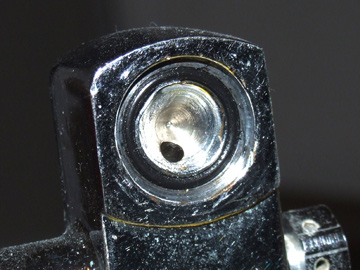I learned the hard way to check all rental tanks when we go diving locally. It's 40 miles from the dive shop to where we dive, and last fall we got a tank with a faulty tank valve . It bled more than a trickle, it bled alot, but we used the opportunity for an experiment, as we in calm, controlled conditions and not too deep. My buddy Charlie dove the leaky valve tank, and I dove the good one (I am the divemaster, after all). We stayed at 40 feet or shallower, and the tank lasted about 30 minutes. ( Normal for Cgharile at tthose depths would have been well over an hour. We learned that when Charlie's computer said zero air he still had 12 breaths at 30 feet. We learned that Charlie could breathe off my alternate air source but when I made a left turn he got quite a pull on the regulator. So now we hook up a regulator to each tank we rent and listen closeley for leaks before we load the tank. Live and learn.
DivemasterDennis
DivemasterDennis






